Bài giảng Nghệ thuật lãnh đạo - Chapter 3: Individual Differences and Traits
Purpose
After studying this chapter, you will be able to:
●Explain the role of individual difference
characteristics in leadership
●Describe the difference between the past and
current approaches to leadership traits
●Discuss the role demographic characteristics play
in leadership
●Identify the impact of values on leadership
●Present the relationship between emotional
intelligence and leadership
●Highlight the role of the “Big Five” and other
personality traits that are relevant in leadership
●Understand cross-cultural differences in individual
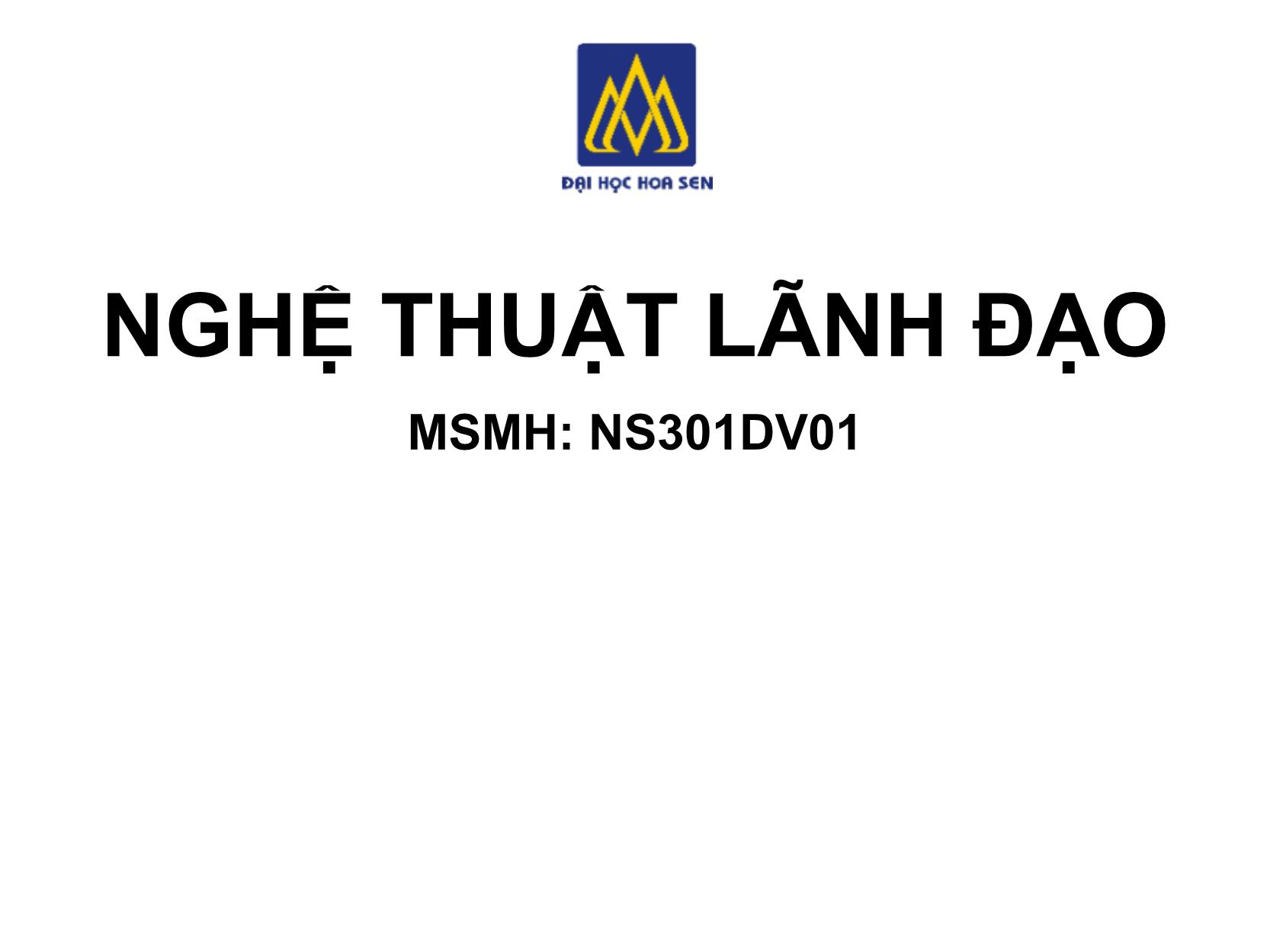
Trang 1
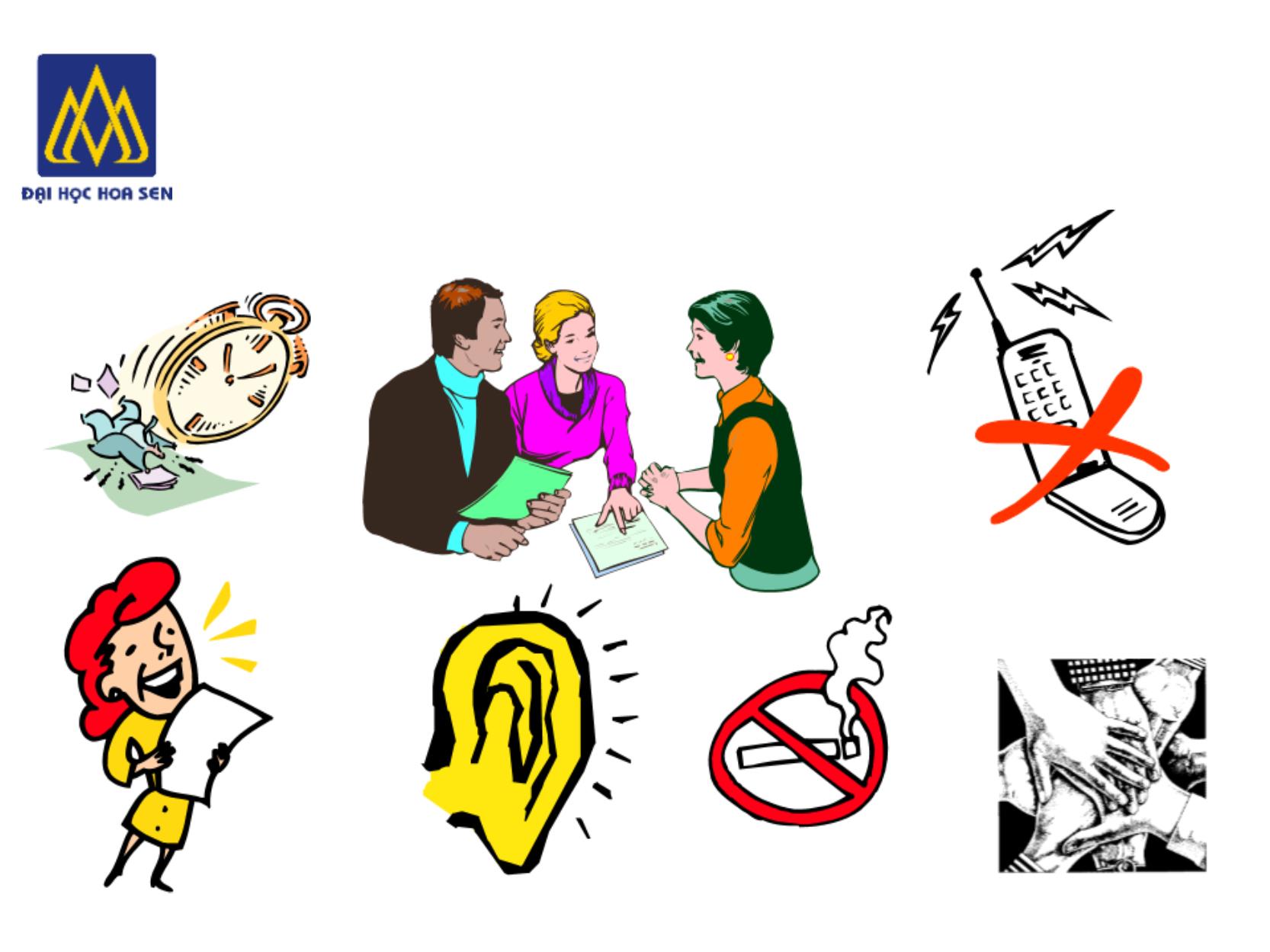
Trang 2
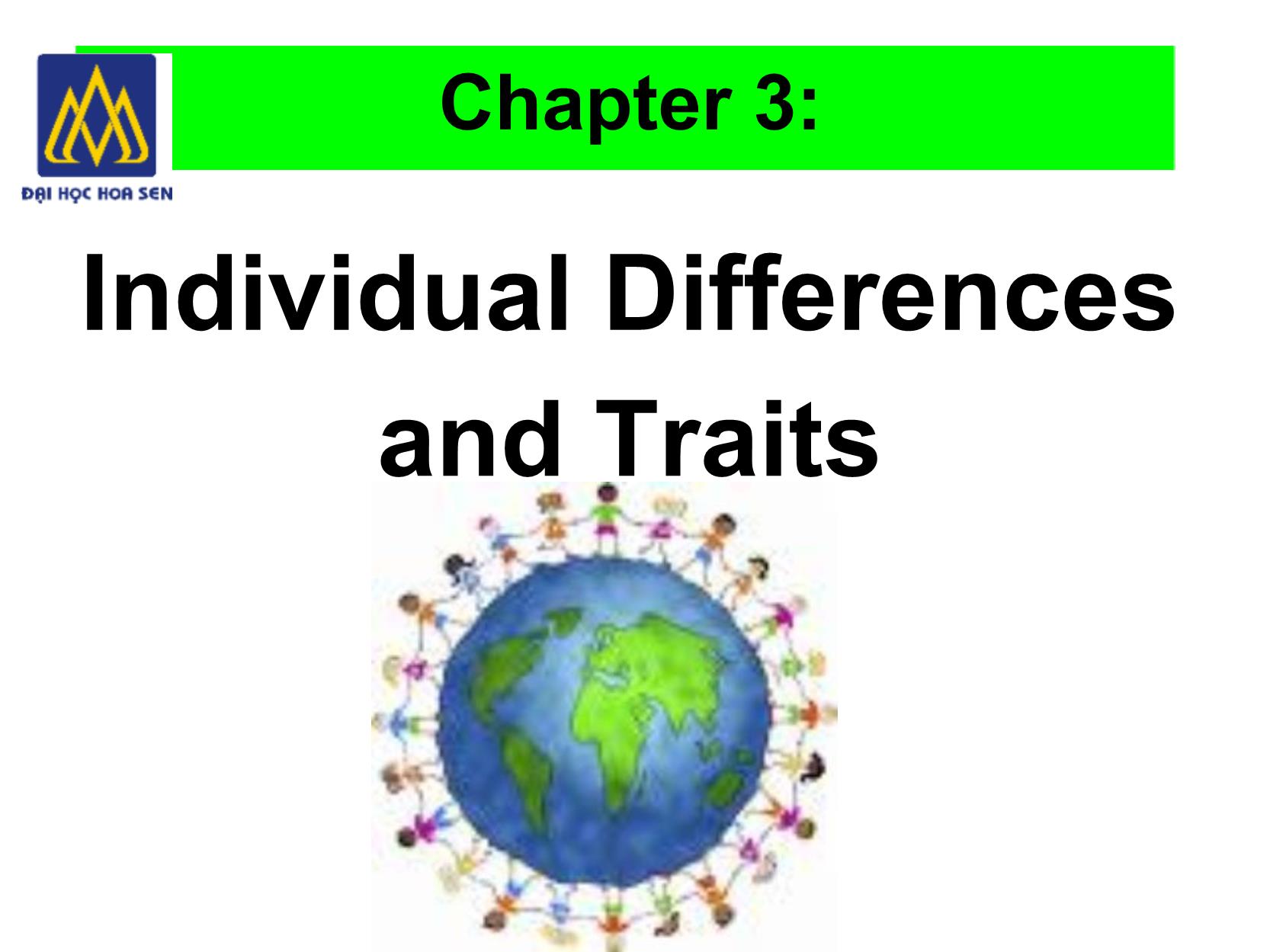
Trang 3
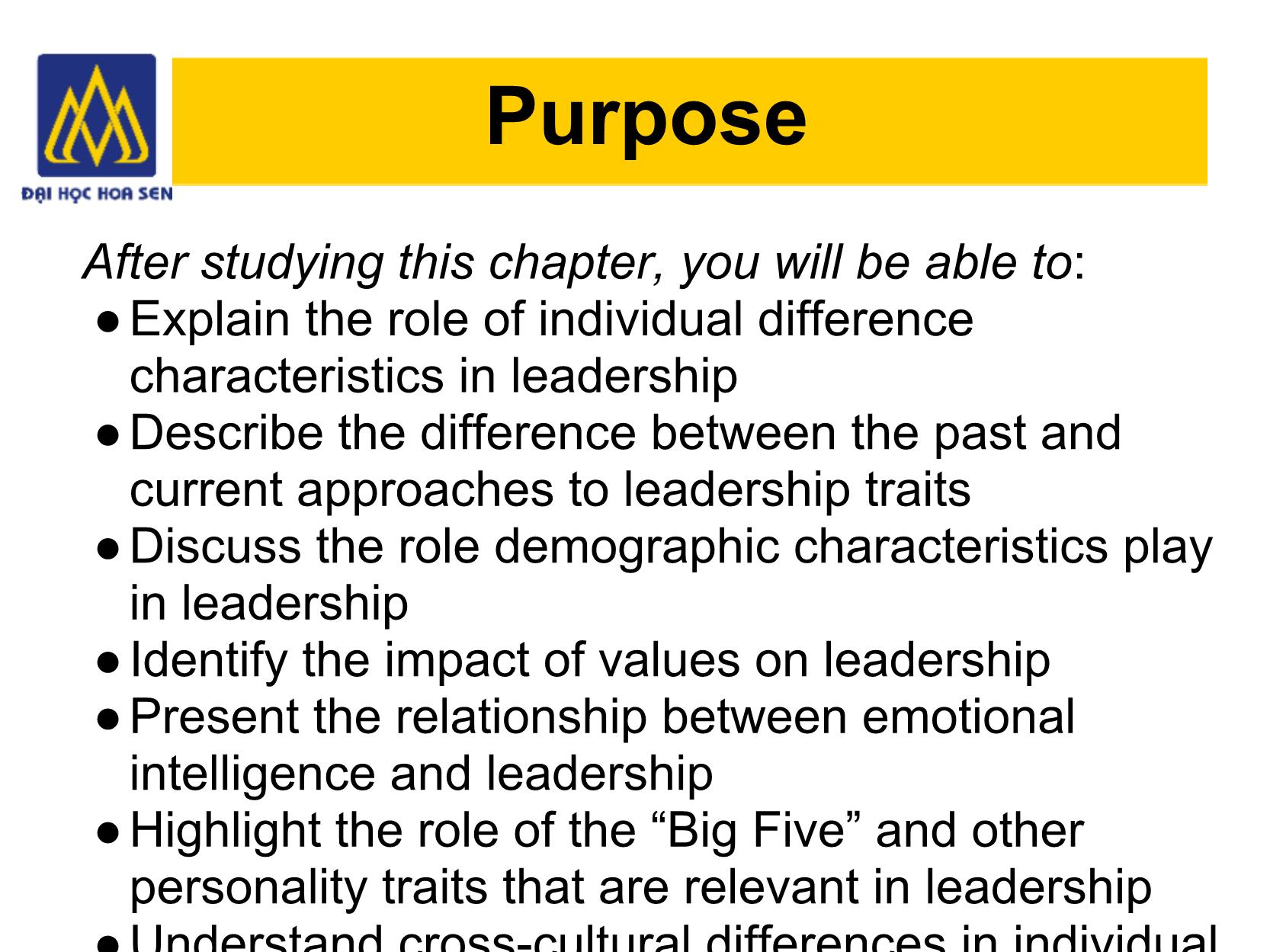
Trang 4
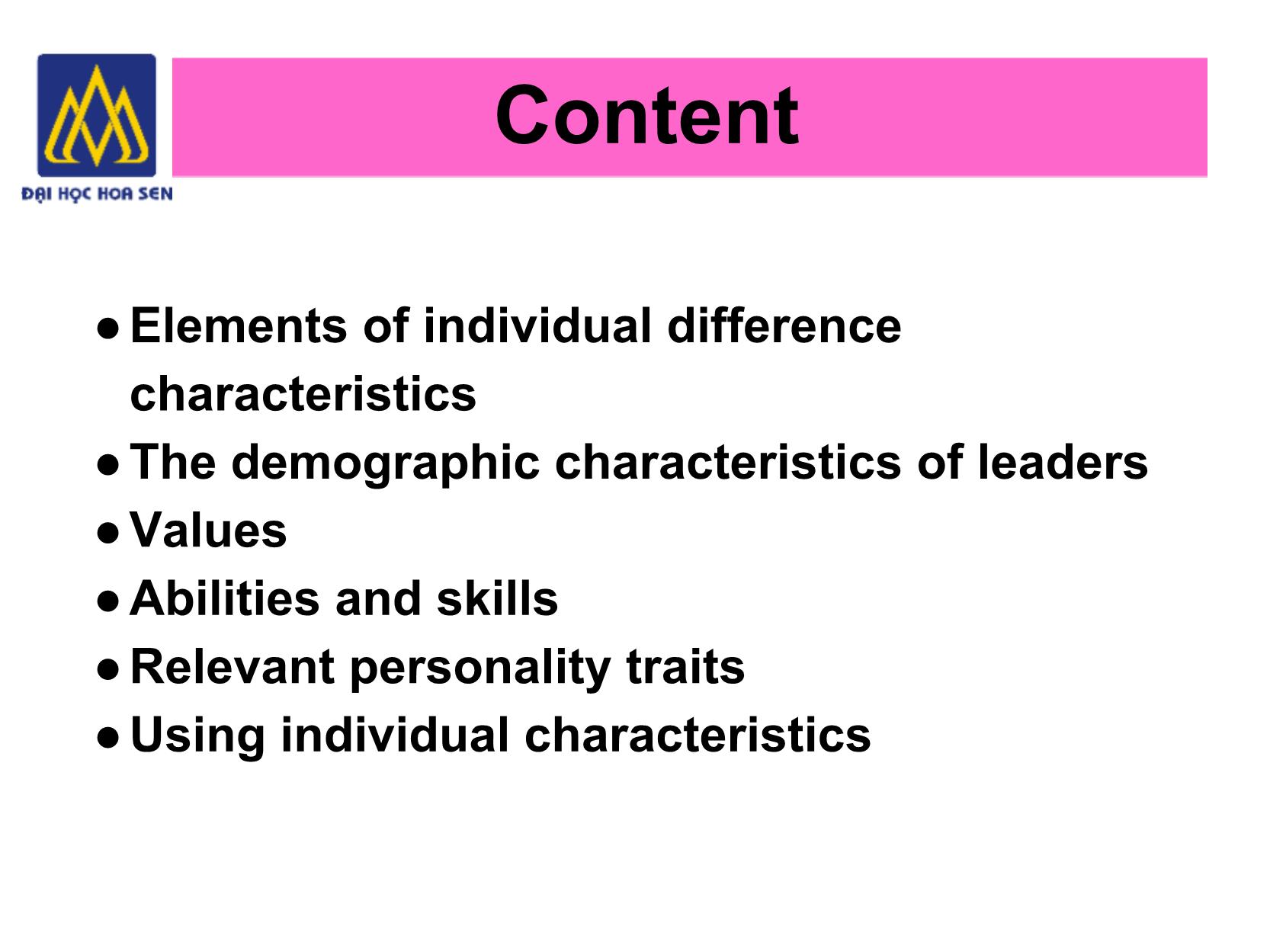
Trang 5
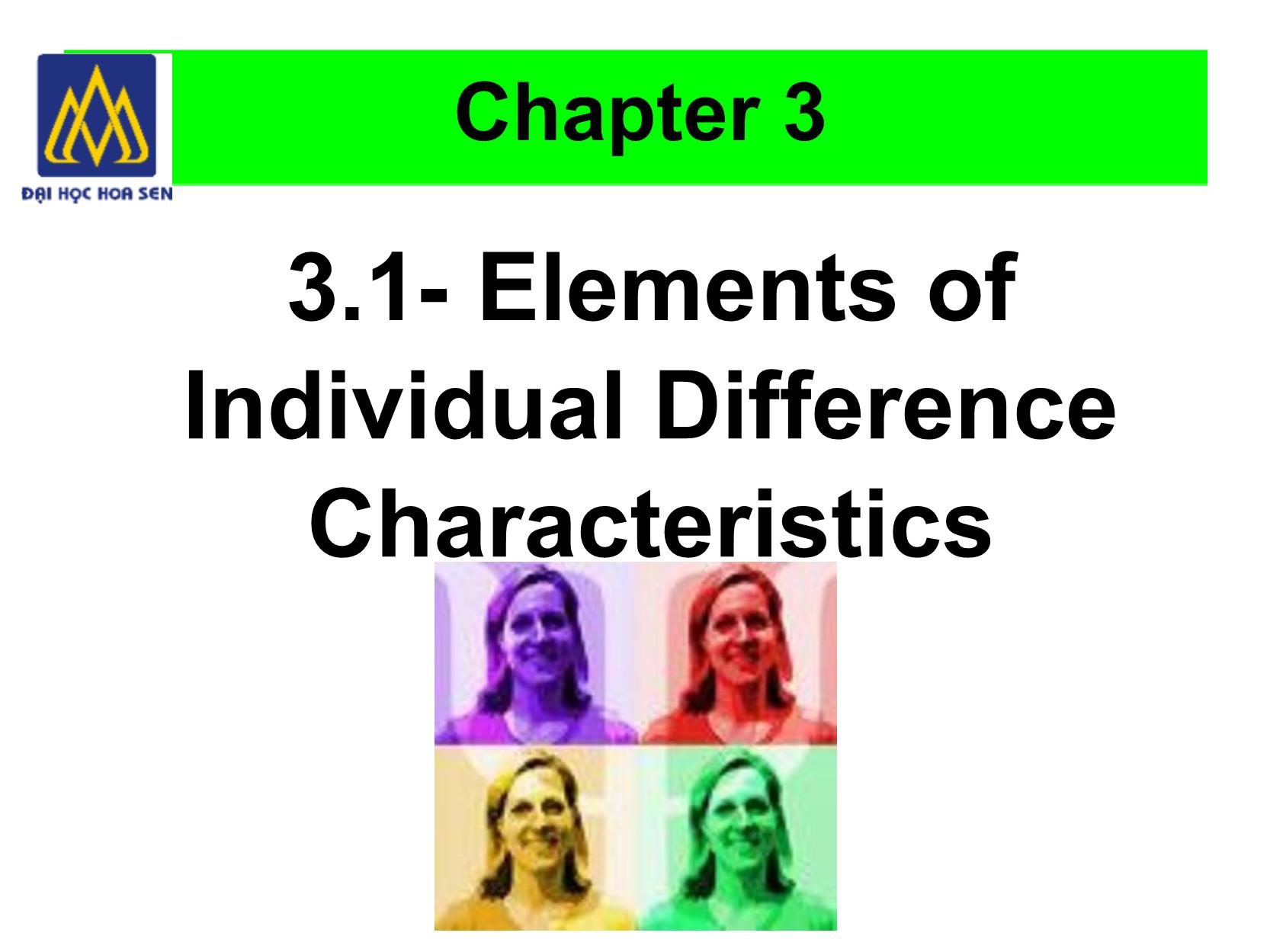
Trang 6
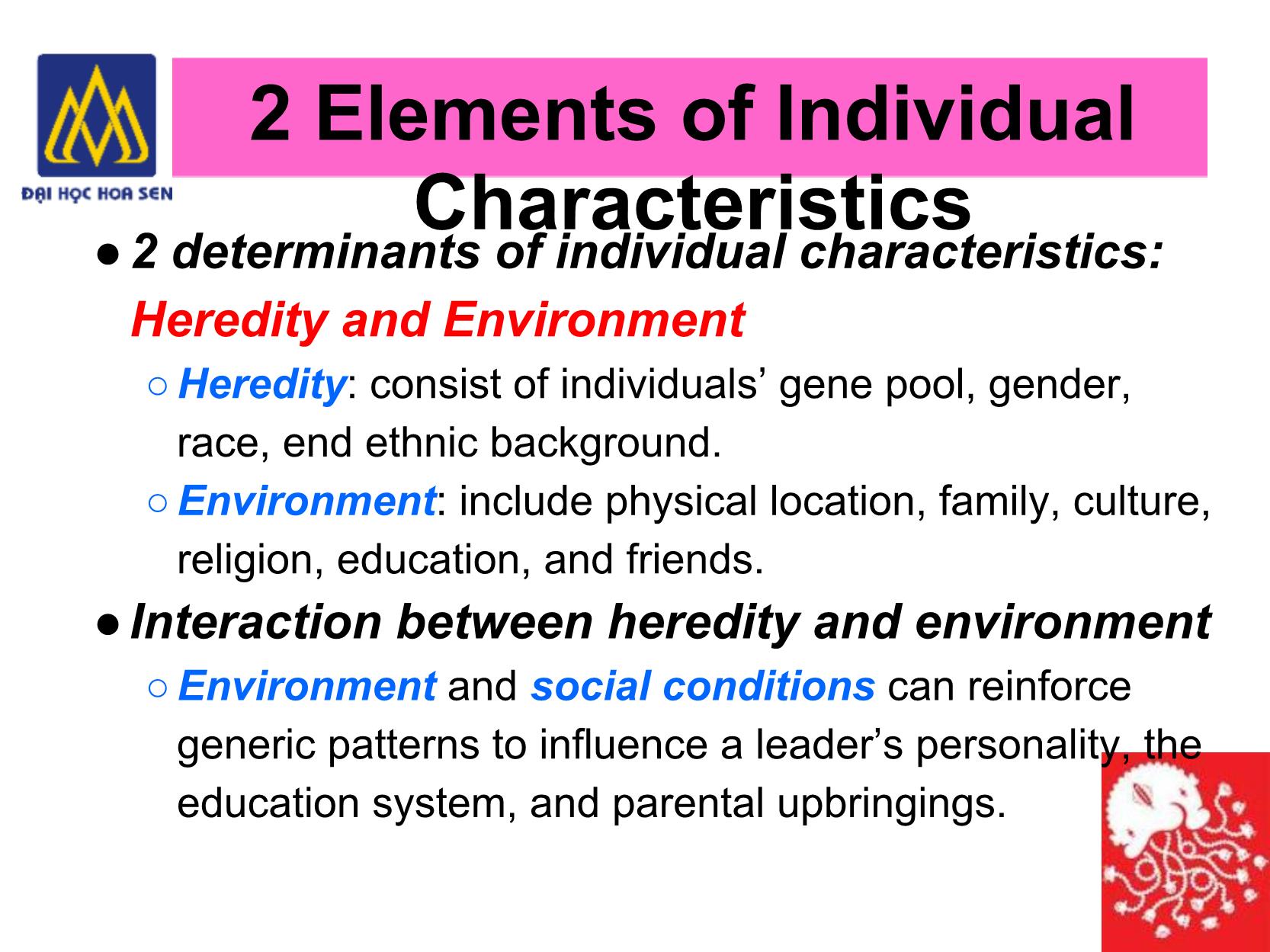
Trang 7
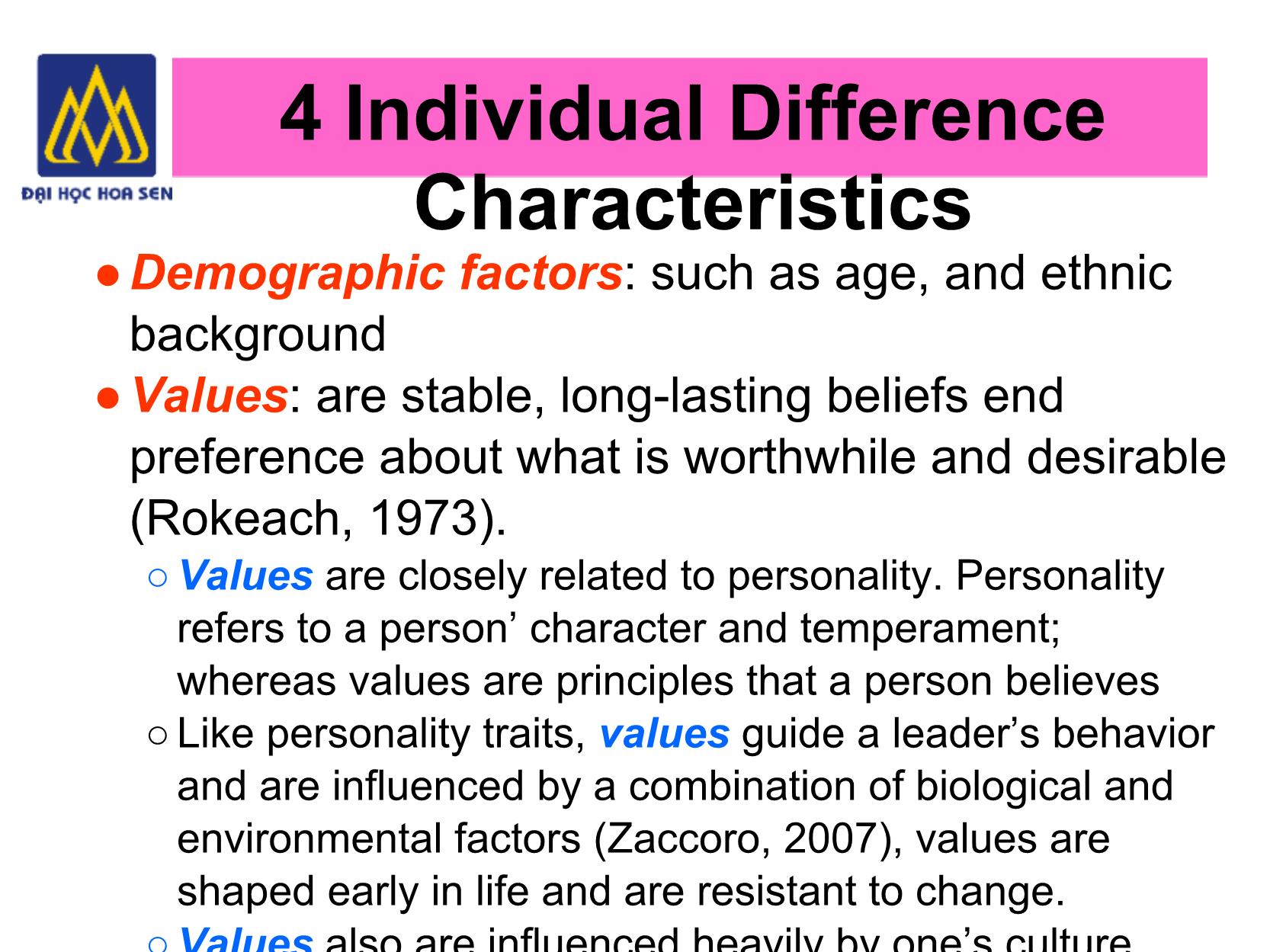
Trang 8
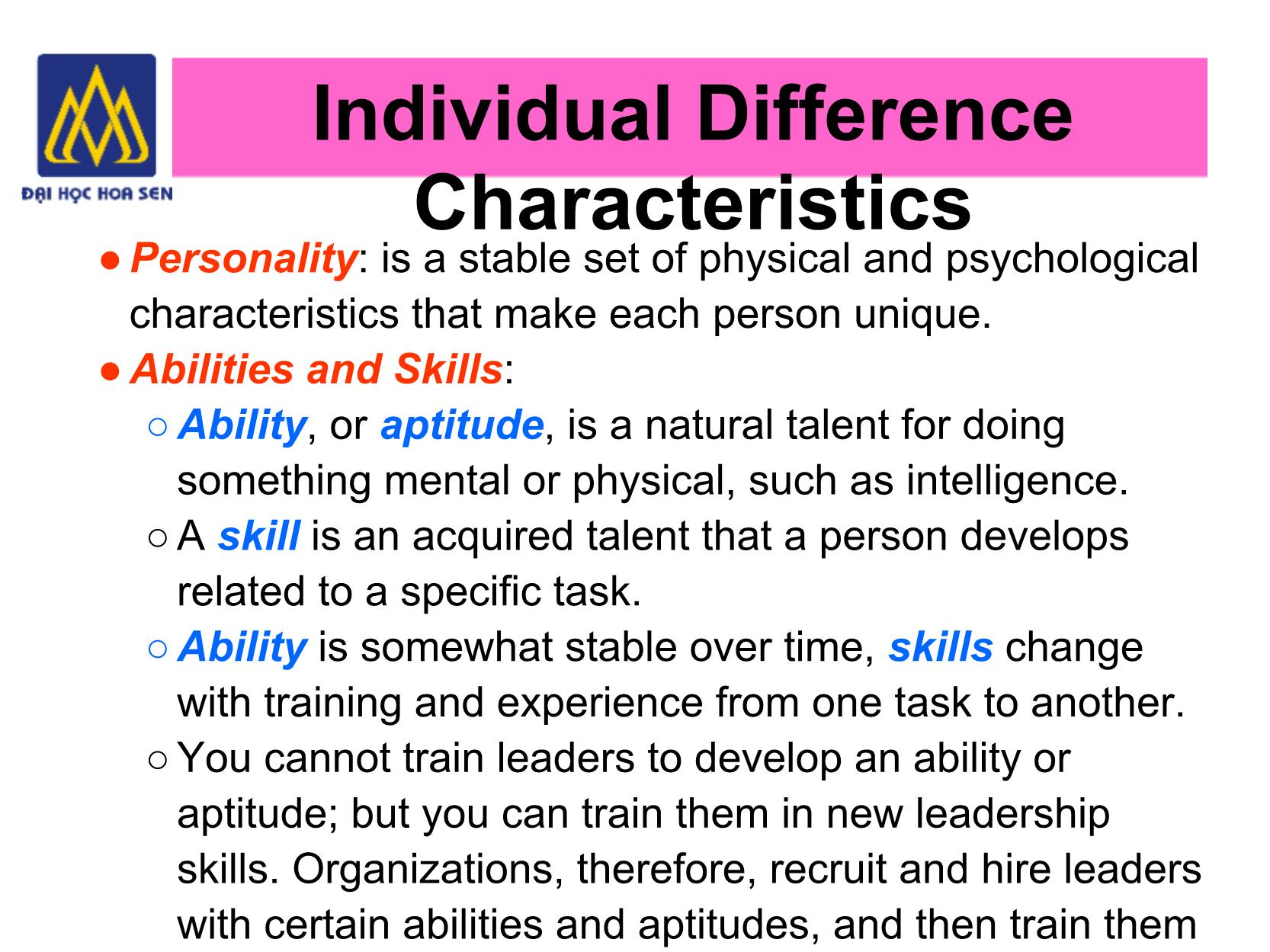
Trang 9
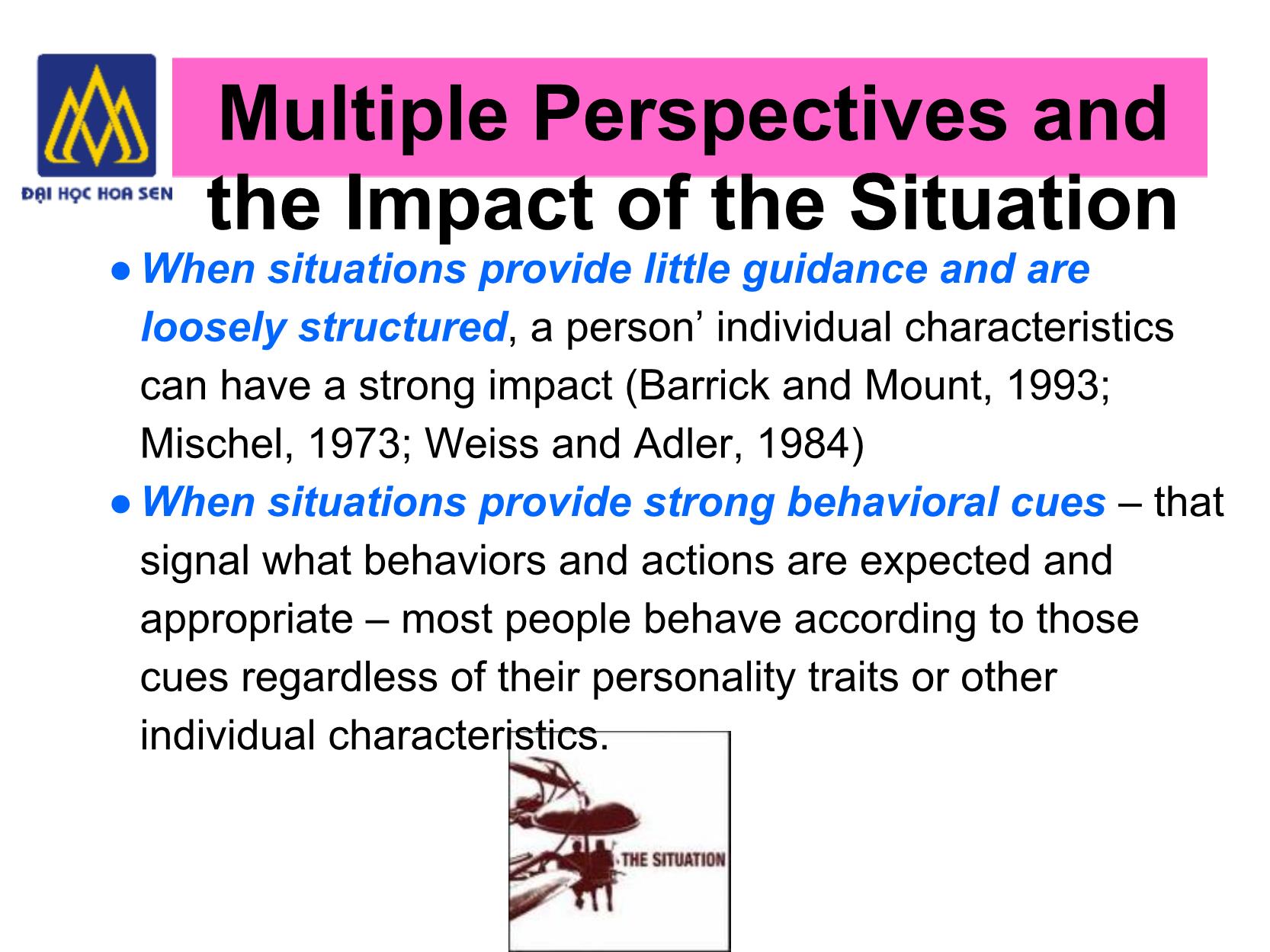
Trang 10
Tải về để xem bản đầy đủ
Bạn đang xem 10 trang mẫu của tài liệu "Bài giảng Nghệ thuật lãnh đạo - Chapter 3: Individual Differences and Traits", để tải tài liệu gốc về máy hãy click vào nút Download ở trên
Tóm tắt nội dung tài liệu: Bài giảng Nghệ thuật lãnh đạo - Chapter 3: Individual Differences and Traits
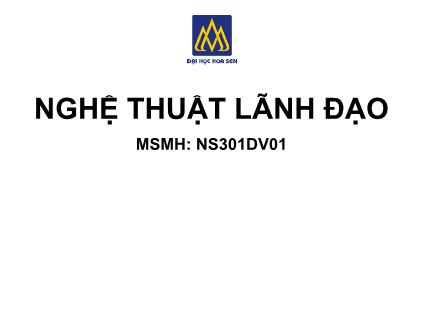
NGHỆ THUẬT LÃNH ĐẠO MSMH: NS301DV01 Chapter 3: Individual Differences and Traits Purpose After studying this chapter, you will be able to: ●Explain the role of individual difference characteristics in leadership ●Describe the difference between the past and current approaches to leadership traits ●Discuss the role demographic characteristics play in leadership ●Identify the impact of values on leadership ●Present the relationship between emotional intelligence and leadership ●Highlight the role of the “Big Five” and other personality traits that are relevant in leadership ●Understand cross-cultural differences in individual difference characteristics Content ●Elements of individual difference characteristics ●The demographic characteristics of leaders ●Values ●Abilities and skills ●Relevant personality traits ●Using individual characteristics Chapter 3 3.1- Elements of Individual Difference Characteristics 2 Elements of Individual Characteristics ●2 determinants of individual characteristics: Heredity and Environment ○ Heredity: consist of individuals’ gene pool, gender, race, end ethnic background. ○ Environment: include physical location, family, culture, religion, education, and friends. ●Interaction between heredity and environment ○ Environment and social conditions can reinforce generic patterns to influence a leader’s personality, the education system, and parental upbringings. 4 Individual Difference Characteristics ●Demographic factors: such as age, and ethnic background ●Values: are stable, long-lasting beliefs end preference about what is worthwhile and desirable (Rokeach, 1973). ○ Values are closely related to personality. Personality refers to a person’ character and temperament; whereas values are principles that a person believes ○ Like personality traits, values guide a leader’s behavior and are influenced by a combination of biological and environmental factors (Zaccoro, 2007), values are shaped early in life and are resistant to change. ○ Values also are influenced heavily by one’s culture. Individual Difference Characteristics ● Personality: is a stable set of physical and psychological characteristics that make each person unique. ● Abilities and Skills: ○ Ability, or aptitude, is a natural talent for doing something mental or physical, such as intelligence. ○ A skill is an acquired talent that a person develops related to a specific task. ○ Ability is somewhat stable over time, skills change with training and experience from one task to another. ○ You cannot train leaders to develop an ability or aptitude; but you can train them in new leadership skills. Organizations, therefore, recruit and hire leaders with certain abilities and aptitudes, and then train them to acquire needed skills. Multiple Perspectives and the Impact of the Situation ● When situations provide little guidance and are loosely structured, a person’ individual characteristics can have a strong impact (Barrick and Mount, 1993; Mischel, 1973; Weiss and Adler, 1984) ● When situations provide strong behavioral cues – that signal what behaviors and actions are expected and appropriate – most people behave according to those cues regardless of their personality traits or other individual characteristics. Individual Characteristics Provide a Range Each individual characteristic provides a behavioral zone of comfort. ● The zone of comfort includes a range of behaviors that come naturally and feel comfortable to perform because they reflect individual characteristics. Behaving outside of that zone is difficult, takes practice. ● Although individuals are ease in their behavioral comfort zone, they learn and grow by moving to zones of discomfort. The behaviors outside of the comfort zone challenge them and push them to their limits. Individual Characteristics and Behaviors Leaders’ Individual Characteristics and Leader Behaviors Kirkpatrick and Locke (1991) list a number of traits that facilitate a leader’s acquisition of needed leadership skills: ● Drive, which include motivation and energy ● Desire and motivation to lead ● Honesty and integrity ● Self-confidence ● Intelligence ● Knowledge of the business Leaders’ Individual Characteristics and Leader ● Some of the traits, namelyBehaviors intelligence and drive, cannot be acquired through training. Others, such as knowledge of the industry and self-confidence, can be acquired with time and appropriate experience. ● The trait of honesty is a simple choice. ● Integrity, or a lack of it, is cited as a key factor in leadership. Bad leadership contain elements of lack of trust, dishonesty, and unwillingness to be held accountable on the part of the leaders. ● Just as some traits are necessary for leadership, they can be detriment when carried to an extreme. ○ A leader with too much drive may refuse to delegate tasks, and a desire for too much power can work against a leader’s effectiveness (Bennis and Nanus, 1985) Chapter 3 3.2- The Demographic Characteristics of Leaders Homogeneity Homogeneity of the executives ● Although education opens the door for diverse people to reach leadership positions, and although there has been progress in the number of women and people of diverse nationalities in leadership positions, the leadership path is still primary influenced by birthplace, nationality, religion, education, social class, gender, and race (Mayo and Nohria, 2006) ● Formal organizational leadership is still heavily dominated by males. Homogeneity ●Homogeneity in demographic background does not necessarily lead to similar approaches in managing a business and leading followers; but to lead to high diversity of tho ... in life � types of skills and attributes that people use to solve everyday challenges they may face. ○ People with this type of intelligence either change their behavior to adapt to the environment, manipulate the environment, or find a new environment (Sternberg et al., 2000) ○ WICS model of leadership – integrates Wisdom, Intelligence, and Creativity in a System approach putting intelligence at the center of leadership traits (Sternberg 2003) Emotional Intelligence ●Emotional Intelligence (EI; or EQ for Emotional Quotient): the ability to interact well with followers, satisfy their emotional needs, and motivate and inspire them � social and interpersonal aspects of intelligence. Components of Emotional Intelligence Component Description Self- Being aware of and in touch with your own awareness feelings and emotions Self-regulation Being able to manage various emotions and moods without denying or suppressing them Self-motivation Being able to remain positive and optimistic Empathy for Being able to read others’ emotions others accurately and putting yourself in their place Interpersonal Having the skills to build and maintain and social positive relationship with others skills Creativity ● Creativity, also known as divergent thinking or lateral thinking – is the ability to combine or link ideas in new ways to generate novel and useful alternatives (Sternberg, 2007) ● Creativity is a necessary component of leadership because leaders are often expected to develop new ideas and directions that others will follow. ● Creative leaders listen intently to all sources, especially to bad news, in order to know where the next problem is emerging. They value subjective as objective information. Creativity ●Creative leaders typically share 4 characteristics: ○ Perseverance in the face of obstacles and self- confidence. ○ Willingness to take risks. ○ Willingness to grow and openness to experience ○ Tolerance and ambiguity Skills ●Leadership skills are divided into 3 categories: technical, interpersonal, and conceptual ●The impact of ability and skills on leadership depends to a great extent on the situation. ●Situational factors, such as the type of organization, level of leadership, ability and needs of followers, and type of task at hand, all influence what abilities and skills leaders will need to be effective. Skills Category Skills Description Category Technical skills Knowledge of the job processes, methods, tools, and techniques. Interpersonal Knowledge of interpersonal relationships skills including communication, conflict management, negotiation, and team building. Conceptual Know of problem solving, logical thinking, skills decision making, creativity, and reasoning in general. Chapter 3 3.5- Relevant Personality Traits Relevant Personality Traits No specific traits can predict who will become a leaders or which leaders will be effective. Traits do play a role in leadership in several ways (Zaccaro, 2007) ● Some traits are consistently associated with leadership. ● A leader's personality influences his/her preferences, style, and behavior. ● Personality may affect the ease with which a leader learns skills and able to implement them. ● Being aware of key personality traits shown to affect work-related behaviors can help leaders develop their self-awareness and aid them in their learning and development. ● Traits can be strong predictors of leadership when considered in an integrated system that includes several individual difference characteristics and situational and contextual variables. The Big Five Personality Dimensions 1.Conscientiousness 2.Extraversion-Introversion 3.Agreeableness 4.Emotional Stability 5.Openness to Experience The Big Five Personality Dimensions Conscientiousness The extent to which individuals are hardworking, organized, dependable, and persevering (high conscientiousness) versus lazy, disorganized, and unreliable (low conscientiousness). The Big Five Personality Dimensions Extraversion-Introversion The degree to which individuals are gregarious, assertive, and sociable (extraverts) versus being reserved, timid, and quiet (introverts). The Big Five Personality Dimensions Agreeableness The extent to which individuals are cooperative and warm (highly agreeable) versus cold and belligerent (highly disagreeable). The Big Five Personality Dimensions Emotional Stability The degree to which individuals are insecure, anxious, depressed, and emotional (emotionally unstable) versus calm, self-confident, and secure (emotionally stable). The Big Five Personality Dimensions Openness to Experience The extent to which individuals are creative, curious, and cultured (open to experience) versus practical and with narrow interests (closed to experience). Other Personality Traits ●Locus of Control ●Type A Behavior ●Self-Monitoring ●Myers-Briggs Type Indicator (MBTI) ●Machiavellian Personality ●Narcissism Locus of Control ●Locus of control is an indicator of an individual’s sense of control over the environment and external events. Locus of Control ● People with a high internal locus of control ○ believe that many of the events around them are a result of their action, ○ feel a sense of control over their lives, ○ attribute their successes and failures to their own efforts, ○ are more proactive and take more risks, ○ demonstrate the motivation, energy, and self-confidence, ○ are less anxious, set harder goals, and are less conforming to authority, ○ make greater efforts to achieve their goals and tend to be more task oriented, ○ tend to be more ethical in their decision making and harsher on bribery, and open to globalization. Locus of Control ● People with a external locus of control ○ attribute the events in their lives to forces external to them – such as luck, other powerful people, or a deep religious faith, ○ attribute their success to luck and interpersonal skills rather than to their intelligence and ability ○ do not generally perceive a high degree of control over their lives ○ are more reactive to events and less able to rebound from stressful situations ○ rely on others’ judgments and conform to authority more readily ○ are likely to use more coercive power ○ tend to be reactive, ○ believe others will do the same and overcontrol their followers to compensate for how they perceive others. Type A vs. Type B Behavior ●Type A Behavior Pattern: A pattern of behavior involving high levels of competitiveness, time urgency, and irritability. ●Type B Behavior Pattern: A pattern of behavior characterized by a casual, laid-back style; the opposite of the Type A behavior pattern. Type A Behavior ● Type A: trying to do more in less and less time, need for control. ● Type A characteristics and behaviors: ○ Time urgency: being in a hurry, impatience, and worries about time. ○ Competitiveness: highly competitive in work, social, and sport situations; measure outcome against others and keep track of performance; getting ahead and winning. ○ Polyphasic behaviors: involves doing several things at once. Although everyone is likely to undertake several activities when pressured, Type A often do so even when not required to by work or by other deadlines. ○ Hostility: is manifested in explosive speech; diffused anger; intolerance for delays or mistakes; and a generally fiery, aggressive, and sometimes malicious style of interaction Type A Behavior Type A Behavior Relationship between Type A to leadership: Type A executives ● see more threats in the environment of their organizations, and set challenging strategies that still provide them with a sense of control; ● tend to be poor delegators and generally prefer to work alone. With the increasing focus on cooperation, use of teams, and empowerment as a leadership style, the inability to delegate can present an obstacle to successful leadership. ● like to maintain control over all aspects of their works; ● tend to set high performance goals, and have high expectations for themselves and those around them. Such high expectations lead to faster promotions at lower organizational levels, to high performance and high quality, as well as to overload and burnout when carried to an extreme. ● do not recognize and admit that they are tired. They are hard workers who may not understand other people’s less approach to work. Self-Monitoring ●Self-monitoring: identifies the degree to which people are capable of reading and using the cues from their environment to determine their behaviors. ●A personality trait involving the extent to which individuals adapt their behavior to the demands of specific situations so as to make good impressions on others. Self-Monitoring ●High self-monitors (SMs) – individuals who score high on the scale – ○ are able to read environmental and social cues regarding what is appropriate behaviors, and use those cues to adjust their behaviors; ○ can present themselves and manage impressions, and are able to mirror and mimic others’ behaviors; ○ are particularly good at getting along with others and even may be more likely to emerge as leaders because of their ability to get ahead, and that they may be more adaptive and innovative. Self-Monitoring Self-Monitoring ●Low self-monitors ○ do not read the cues or do not use them to change their behaviors; ○ are more internally determined and are likely to appear constant across different situations � make them more accurate decision makers regarding performance ratings and personnel decisions. Impact on conflict management ● Impact of gender, self-monitoring, and Type A on conflict management and leadership in organizations: ○ High SMs emerge as leaders more often than do Low SMs. ○ Men emerge as leaders more often than do women. ○ Type As are in conflict more often than are Type Bs, particularly when dealing with their subordinates. ○ High SMs resolve conflicts cooperatively when dealing with their subordinates and supervisors. ○ Women generally report lower levels of conflicts with both their subordinates and supervisors. ○ High SM women are especially sensitive to various organizational cues and seem to perceive more conflict. Myers-Briggs Type Indicator (MBTI) ●MBTI is one of the most widely used personality tests in organizations for leadership training and team building (Hammonds, 2001) ●Four MBTI Categories: Myers-Briggs Type Indicator (MBTI) Machiavellian Personality ●A personality trait involving willingness to manipulate others for one’s own purposes. ●The Machiavelli (Mach) scale: measures an individual’s willingness to put self-interest and his/her preferences above the interests of the groups, and the ability to influence and manipulate others for personal gain (Jaffe, Nebenzahl, and Gotesdyner, 1989; Panitz, 1989). Machiavellian Personality ●High Machs: ○ view human nature cynically, show few scruples, and are willing to set outside the bounds of formal authority; ○ are more flexible in the type of behavior they use to influence others, relying on emotional appeals rather than logic and rational argument. ●Low Machs: ○ tend to be overly naïve and trusting. Machiavellian Personality ●Neither the high Machs nor low Machs are likely to be effective leaders. ○ High Machs are too focused on their personal goals; ○ Low Machs are not skilled at the legitimate tactics essential for effective leadership. ●Individuals who are medium Machs tend to be the most effective leaders. ○ They are good negotiators, and savvy about manipulation of others to reach goals, but, they do not abuse their power, and they focus on achieving organizational rather than personal goals. Narcissism Characteristics of narcissism: ● Grandiose sense of self-importance and exaggeration of one’s achievement and talents ● Preoccupation with power and success ● Arrogance ● Indifference to others and self-absorption ● Inability to tolerate criticism and a fragile self-esteem ● Desire to be the center of attention at all times ● Sense of entitlement ● Exploiting others without guilt to achieve goals ● Lack of empathy for others and inability to understand others’ feelings ● Trouble building meaningful relationships Chapter 3 3.6- Characteristics of Leaders Who Fail Characteristics of leaders who fail ● Abrasive, intimidating style ● Coldness and arrogance ● Untrustworthiness ● Self-centeredness and overly political actions ● Poor performance ● Inability to delegate Chapter 3 3.7- Using Individual Characteristics Using individual characteristics Despite the validity of the constructs presented, it is important to limit the use of the scales to the purpose for which they are developed. The scales are all good self- awareness and self-development tools. ● Self-awareness: the first step to leadership effectiveness is being aware of one’s strengths, weaknesses, and personality characteristics. ● The self-awareness trends in the business sector are leading to the use of 360-degree feedback, which allow managers to receive feedback about their behaviors, style, and performance, not only from their bosses but also from their peers and subordinates. ● Another self-awareness tool is the use of mediation and self-reflection � increasing self-awareness and managing stress. Questions?
File đính kèm:
 bai_giang_nghe_thuat_lanh_dao_chapter_3_individual_differenc.pdf
bai_giang_nghe_thuat_lanh_dao_chapter_3_individual_differenc.pdf

